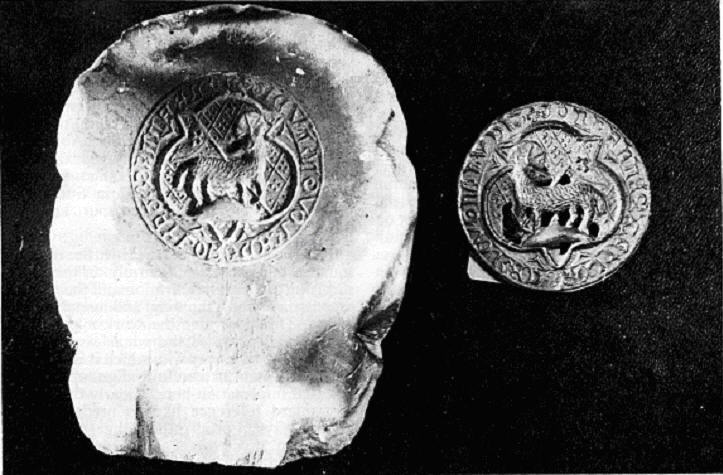|
by the Reformation23.
As this went to press
the fraud was exposed. Charles Reed had been making his own
investigations. He visited Shadwell Dock, but he could not find
anybody who had uncovered any of the objects. When a sewer
hunter (a scavenger who roamed the city sewers) offered to sell
him some of the finds he won his confidence and persuaded him to
divulge that they were forgeries. Through him he gained an
introduction to Billy and Charley. Discovering that they felt
that antique dealers had defaulted on payments he offered to buy
from them. Having gained their trust he bribed the sewer hunter
to break into their workshop and steal their moulds. That March
he exhibited the moulds to the Society of Antiquaries. Augustus
Franks praised his detective work24.
The reactions of those who had accepted the objects as genuine
arc not known. Charles Roach Smith made no mention of the affair
in his memoirs25. George Eastwood, however, continued
in business in the Haymarket until 186626.
23.C. R. Smith 'The leaden images
found at Shadwell' Collectianea Antiqua 5
(1861) 252-60.
24. Proc Soc Ant Lond 2 ser 1
(1861) 361-5.
|
It may be wondered how people were duped by these objects,
but scientific archaeology was m its infancy. Charles Roach
Smith and Thomas Hugo were the first people to make a systematic
study of medieval small finds. Beside this. the debate turned
into a moral issue, making impartial discussion difficult.
Billy and Charley escaped prosecution (it may have been
difficult to prove that they had broken the law). They continued
their activities and swindled several members of the British
Archaeological Association. This may have caused Henry Syer
Cuming to break his silence, for he lectured on their forgeries
to the Association in 1864. He observed that they had started to
use "Cock metal", an alloy of two parts copper and one part lead27.
Billy and Charley's technique evidently improved with
experience, as their cock metal forgeries show more delicate
workmanship than the leaden ones (Fig. 5).
Increasing
awareness of Billy and Charley 's activities may have caused
them to seek new
25. Retrospections
(1883-91).
26. The Post Office London
Directory (1866) 422.
|
